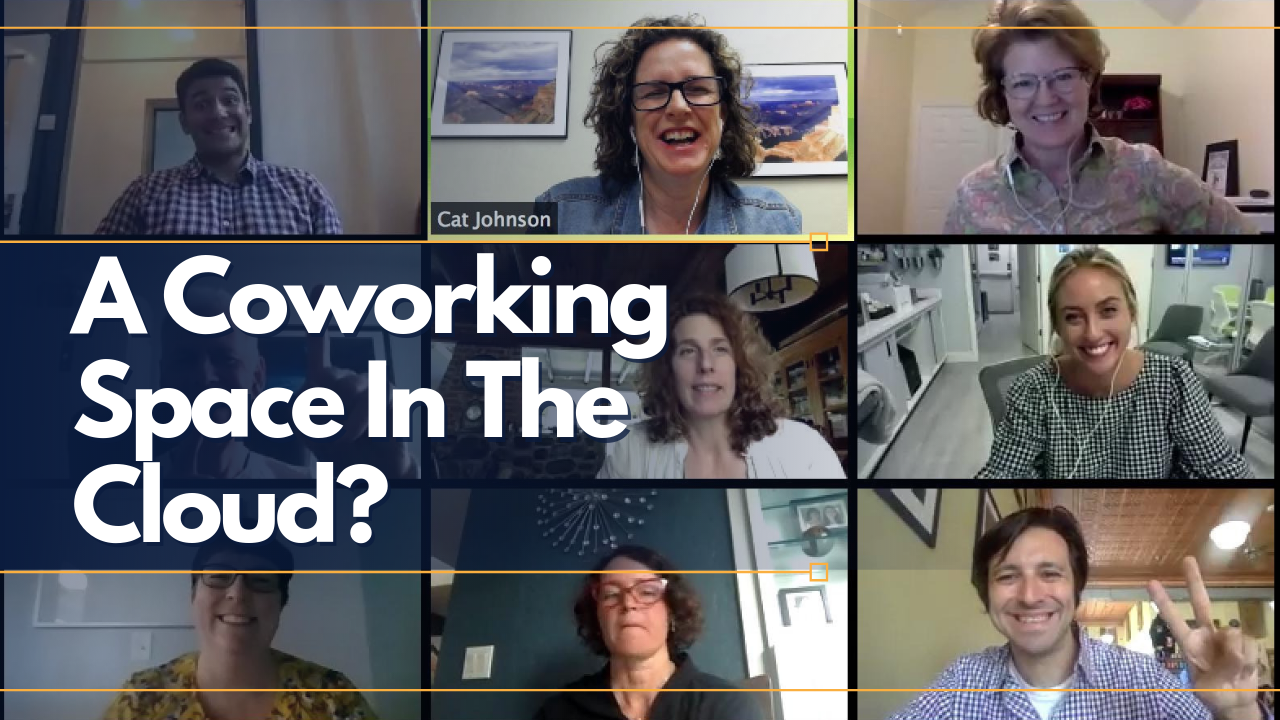- Virtual environments are enabling individuals to connect with with legions of like minded people, whether to play videogames or create virtual workspaces.
- Sococo is a virtual platform designed for remote teams that breaks down barriers by creating a virtual workspace.
- Cat Johnson shares some lessons she’s learned from running an online community; highlighting that “people want to connect with real humans doing real things–even in a virtual environment”.
Virtual environments are more prolific and expansive than ever, enabling members to connect with legions of like minded people across the globe. Take Fortnite, the incredibly successful apocalyptic survival game, as a case in point.
With well over 250 million players worldwide, Fortnite’s “population” is over two thirds the size of the US’. Players operate alone or as part of a team to defeat monsters and defend the island’s survivors. But these influential spaces aren’t just confined to the gaming industry.
Virtual workspaces are popping up all over the place too.
Sococo is one such example. Designed with remote workforces in mind, the platform breaks down geographical barriers and brings everyone together in one virtual workspace.
Online members stay logged in throughout the day and use it to collaborate on projects, see what other members are working on and their availability status, ask quick questions and even congregate around a virtual water cooler for a chat!
But do these virtual spaces really have the potential to replace physical ones or do they serve an entirely different purpose? We caught up with someone who runs their own collaborative space in the cloud to get their opinion.
Cat Johnson is a renowned content strategist, teacher and coworking storyteller. She also runs the Coworking Content Alliance—a virtual online community for coworking operators featuring open discussions, webinars and a host of other valuable resources.
Building an online community
We started by asking Cat how easy it is to build an online community. She explains that starting one is easy, but growing one in a positive way is much more complex.
“Here are a few things I’ve learned running the Coworking Content Alliance,” she begins.
“Firstly, be human. People want to connect with real humans doing real things—even in a virtual environment. Let go of any notions of being perfect. Our messy “imperfectness” is what attracts people to us.
“Secondly, be consistent. We have three anchor posts per week in the Alliance: Monday Accountability; a midweek check-in on Wednesday, complete with hilarious gifs; and Friday High Fives. There’s a lot of other activities throughout the week, but having these set posts gives a rhythm to the week and group.
“People especially love the Wednesday gif check-in. I’ve been told it’s like group therapy for coworking space operators.
“Thirdly, protect the community. You have to set a tone of inclusiveness, mutual support and general friendliness. I state this in the group guidelines and I also do my best to model it. You teach people how to participate in your group.
“You also have to be vigilant to protect the group from spam posts. Every once in a while something slips through, but I delete posts and block users without hesitation. It may sound harsh, but it’s for the good of the community as a whole, and I don’t have time to reach out individually to every person and tell them why they shouldn’t spam us.
“I also count on group members to report posts that are spammy. The goal is to have it be a spam-free, super engaged community and online space.”
Why people opt for virtual over physical
In Cat’s opinion, face-to-face contexts will always have the potential to be richer and more nuanced than virtual ones, simply by virtue of us humans being “electromagnetic beings”.
For this reason, she sees online communities as complementary to real-life communities, though admits that she’s fortunate in that she’s part of several active communities in Santa Cruz and beyond, and not everyone has access to that.
“For some, online communities are the only way they have to connect with the world, whether due to geography, illness, circumstances, whatever,” says Cat.
“In those situations, online communities become a lifeline. They can truly be lifesavers for people feeling isolated,” she adds.
Building stronger in-person communities
Cat believes that there will always be a need for physical coworking spaces, but virtual communities are important because they can support them.
“I run my Coworking Content Trainings and Lab, consultation sessions, work sprints, some workshops and a new project I’m working on virtually out of coworking spaces. The reason I do all that, however, is to help space operators attract members that are right for their space, and to create stronger in-person communities.”
So, back to our initial question: is it possible to build a coworking space in the cloud?
Yes it is possible, but they’ll never be as effective as the “real thing”. As Cat concludes: “Life is so much more complicated and messy and beautiful than it is online.
“It’s important that we have physical spaces and communities to be ourselves on good days, bad days and in-between days.
Coworking is the best way I’ve found to do that.”
Are you part of an online community or coworking space? We’d love to hear what you have to say. Start a conversation with us on Twitter @Allwork_Space.


 Dr. Gleb Tsipursky – The Office Whisperer
Dr. Gleb Tsipursky – The Office Whisperer Nirit Cohen – WorkFutures
Nirit Cohen – WorkFutures Angela Howard – Culture Expert
Angela Howard – Culture Expert Drew Jones – Design & Innovation
Drew Jones – Design & Innovation Jonathan Price – CRE & Flex Expert
Jonathan Price – CRE & Flex Expert













